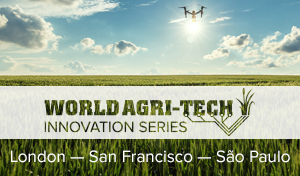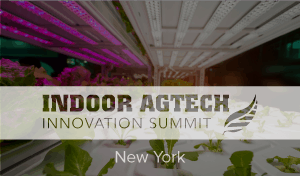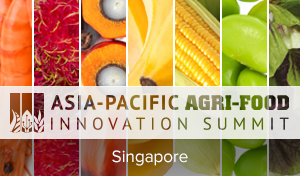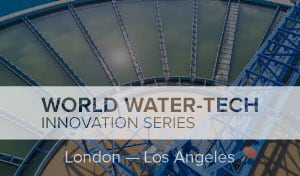With its versatile use cases, from food production to biofuels, carbon sequestration to material and ingredient innovation – seaweed aquaculture is rapidly gaining traction from consumers, investors and leading corporates from across the blue value chain. How is the seaweed sector leveraging this opportunity to spur growth in the sector?
Ahead of the Blue Food Innovation Summit in London (May 21-22), we asked three leading seaweed experts from ATLANTIC SEA FARMS, LLOYD’S REGISTER FOUNDATION and NOTPLA to share their perspectives highlighting key opportunities, bottlenecks and emerging avenues strengthening the sector’s potential worldwide.
- Briana Warner is the President and CEO of Atlantic Sea Farms, a leading kelp aquaculture company in the United States. Briana has been instrumental in expanding kelp farming, aiming to drive demand for kelp-grown products and weave seaweed aquaculture within the climate change adaptation strategy.
- Vincent Doumeizel is a Senior Advisor at UN Global Compact and Director for the Food Programme for the Lloyd’s Register Foundation. A principal advocate for seaweed, he authored ‘The Seaweed Revolution” (Legend Times) and led the “Seaweed Manifesto” and in a call to scale up the seaweed industry in order to address the most critical challenges facing the sector. Vincent co-leads the first international platform for Seaweed Stakeholders, the Safe Seaweed Coalition advancing global collaboration and knowledge-sharing, raising the profile of seaweed in policy networks, advocating for harmonised standards, policies and regulations, and inclusion of seaweed in marine spatial planning.
- Pierre Paslier is the Co-Founder and CEO of Notpla, an award-winning material innovation company harnessing seaweed to develop sustainable packaging solutions. Winner of the prestigious Earthshot Prize, Notpla are famed for their edible liquid packaging, Ooho, their takeaway box coating and single-use film sachet replacements.
How is demand for seaweed and algae developing driven by interest from CPGs and leading brands?
Pierre: “In terms of demand, I think it’s worth mentioning that the seaweed aquaculture industry is already quite mature, producing almost 40 million tonnes of seaweed per year. A big portion of this is used directly for food. Perhaps less-well known is the fact that over a third of this global seaweed is extracted and ends up all over the world, in our homes as ingredients in jams, sweets, dairy products & cosmetics, for example. A range of new markets are emerging for seaweed (and microalgae) however. This is because seaweed can be a hugely renewable resource: it doesn’t require fresh water (this is becoming increasingly relevant as we see fresh water scarcity with climate change), does not compete with land agriculture and does not require fertilisers. The diversity we see in the seaweed world and the complex biochemistry these organisms contain makes them suitable feedstock for a range of uses. At Notpla, we create alternatives to plastics using seaweed, but they can also be used for animal feed supplements, biostimulants (fertiliser type), nutraceutical supplements, textiles and construction materials, to name just a few. Market reports predict CAGRs of about 10% in the next 5 years which we attribute largely to these new markets developing.”

Vincent: “There is a growing emphasis on sustainable practices, including biosecurity and biobanking of seaweed strains to enhance small producers’ resilience, especially in developing countries and vulnerable communities. CPGs and leading brands are incorporating seaweed and algae into various products, such as dairy products, beverages, snacks, food additives, medicines, and animal feed. These companies are also investing in research and development to explore new applications and technologies for seaweed and algae. Leading brands such as Nestlé Purina are exploring the role of seaweed-based bio-stimulants on soil and plant health. Overall, the demand for seaweed and algae is increasingly driven by the recognition of their potential to meet consumer demands for sustainable, healthy, and innovative products.”
What are the key trends shaping global seaweed aquaculture? What innovative new products, ingredients, and market opportunities are emerging within the space?

Briana: “Seaweed farming is by no means new – and a huge part of the world’s population has been eating seaweed as a core part of their diet throughout history. What is new, however, is its wide-scale adoption in the West. In the US alone, seaweed as food in grocery stores (not counting restaurants and dining institutions), is valued over $1.4B USD. In the US, millennials and Gen Zs are now the primary drivers of food sales and they are looking for more sustainable foods that are traceable – and they are also excited about diversifying the food in their diet. These are the generations in the US that grew up eating sushi and have had access to imported seaweed snacks in abundance. Now they are driving trial in other value-added products made with seaweed in the rest of the grocery store and showing the opportunity in the white space beyond basic nori sheets and sushi wraps. Seaweed as food (for humans and pets) must have value-added to make it exciting to the American consumer. Unlike shellfish or fish, seaweed can be used as a boost to almost anything – but it needs to be processed – no one knows what to do with a handful of raw kelp, for example. In this way, CPG brands are driving innovation that shows convenient ways to incorporate superfood climate hero kelp everyday use – and this is, in turn, increasing consumption substantially.”

Pierre: “We’re increasingly seeing farms growing multiple species side by side, including fish and shellfish in what is called Integrated Multi Trophic Aquaculture which maximises nutrient inputs. There is also an increasing amount of research into the biology of seaweed, to be able to produce healthy seedstock to feed into the growing aquaculture industry, as well as research into the protection of wild stocks through monitoring, disease prevention and conservation. There are a few companies mechanising the seeding and harvesting, which allows for farming at scale in deeper water and also traceability improving a lot, particularly where smallholder farmers produce the seaweed. On the processing side, new approaches, such as biorefineries using seaweed biomass as feedstock, or extraction technologies using renewable powered physical extraction techniques like microwaves are just some of the exciting innovations emerging across the seaweed supply chain. Wet stabilisation methods using microbes or other methods, particularly in colder climates, avoid the need for a drying step to stop the seaweed from breaking down within days of the harvest, further reducing the carbon footprint.”
Where are the key challenges in seaweed production and supply chains and what investment and innovation is needed to move the needle and facilitate continued growth?
Vincent: “The seaweed sector is currently a fragmented industry outside of Asia, with a lack of aligned regulations or standards, and insurability problems. The Global Seaweed Coalition was launched to address the challenges of the sector by The key challenges in seaweed production and supply chains also include climate and environmental changes, diseases and pests. The GSC stresses the need for improved traceability, biosecurity, genetic diversity, and advocates for the development of a coordinated global network of seaweed seed banks. New investment efforts are needed to ensure this industry accelerates to the next level. Investments in the seaweed sector should be de-risked, with the help of public incentives, insurance mechanisms, private, public and blended finance. Solid research networks, able to identify existing knowledge gaps to ensure the sustainable future of the rapidly expanding seaweed industry are also needed.”
Briana: “In the US, we have grown from 30,000lbs farmed in the entire country in 2018 to over a million by Atlantic Sea Farms partner farmers alone this year. The industry is primed for growth and it takes innovation by companies to create value added, convenient products that drive high-volume demand for farmed product. We are leaning into the strengths we have in regions of the US where there are thriving fishing communities, working fishing boats, and clean, nutrient dense waters that can scale seaweed farming quickly with minimal capital investment and can help fishermen adapt to a rapidly changing climate while also growing the most climate friendly food on the planet. The only way we should be growing this industry is through inclusive supply chains that harness the deep knowledge and skill sets of our coastal communities to scale sustainably and effectively.”
Pierre: “Where seaweed cultivation is a relatively newer activity, there are often challenges around obtaining licences to start a farm. For example, in England this process can take a number of years, which is a big deterrent to any seaweed entrepreneur. Once a farm is set up, its initial costs are generally high so need to sell into higher value markets such as direct food and cosmetics, which only require small volumes. Another challenge particularly in colder climates is the cost of stabilising the seaweed once harvested. In warm climates, this can be done by laying the seaweed out in the sun, however in colder climates, oven drying is often required, which entails a certain CAPEX and energy spend. Intelligent logistics and centralised/cooperative drying & stabilisation set ups are looking like the way forwards.”
Register here to connect with Briana, Vincent, Pierre and many more leading seaweed experts when they continue the conversation around seaweed cultivation and consumption through multiple plenary discussions, roundtables and presentations across two action packed days at the Blue Food Innovation Summit, May 21-22. See the full programme at: www.bluefoodinnovationsummit.com/agenda

 CLOSE
CLOSE






